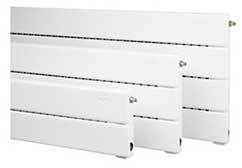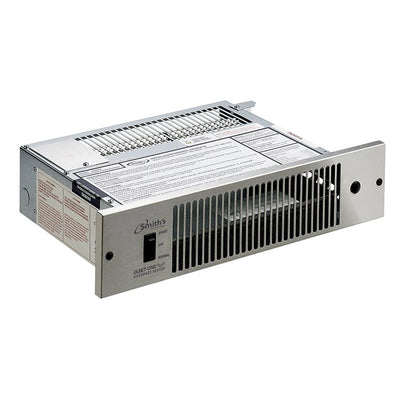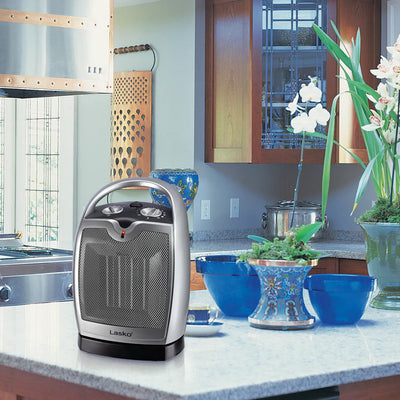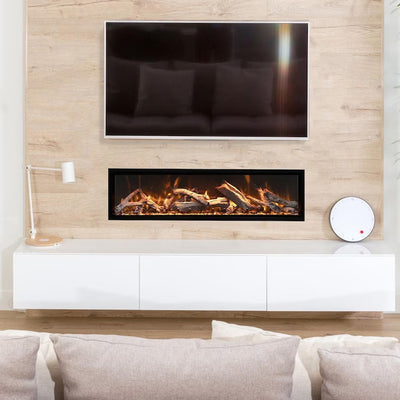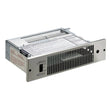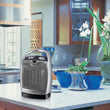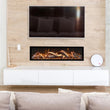Heating
The Benefits of Baseboard Heaters
With winter approaching, keeping your home and its occupants warm is a priority. As the temperatures drop, most homeowners simply turn up the thermostat to heat up the entire house in an effort to stay warm. Unfortunately, this technique also drives your energy bills up, making it the least cost and energy-efficient way to heat your home.
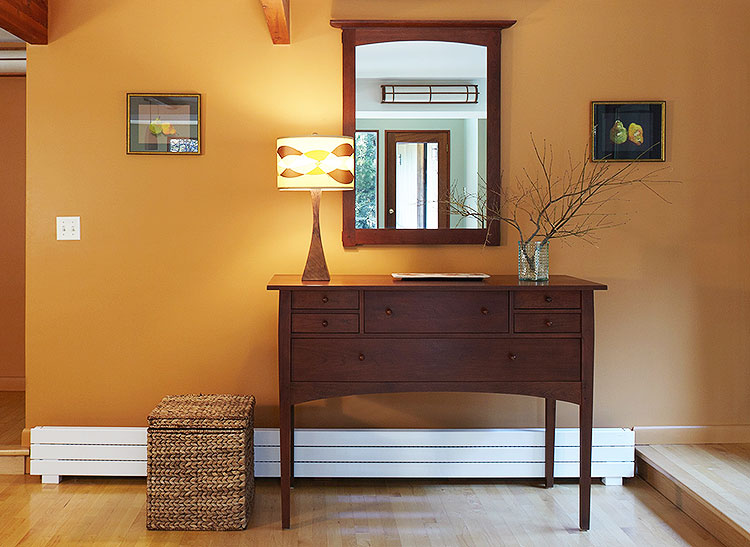
Baseboard heaters add supplemental heat to any room.
Implementing a supplemental heating strategy can help your central heating system work more efficiently and less expensively to keep your home comfortable during the colder fall and winter seasons. Instead of cranking up the heat to raise the internal temperature of your home to a consistent level throughout, the more economical solution is to heat only specific areas that are occupied while the rest of the house stays cooler. By doing this, you are not wasting energy heating unused rooms or using additional energy to move warm air from room to room. You can easily supplement your central system with baseboard heaters in rooms that are drafty or are otherwise especially difficult to keep warm.
What Is a Baseboard Heater?
Highly efficient baseboard heaters sit directly on the floor or a few inches above the floor. They must be used with a thermostat to control its overall temperature and usage. Because they are situated at floor level, baseboard heaters will envelop the whole room in warmth while using very little energy. They allow you to turn down your central heating system to a more budget-friendly lower setting in the rest of the house while the floor heater provides more energy-efficient warmth in just the room you are occupying.
Types of Baseboard Heaters
There are two main types of baseboard heaters: hydronic and electric. Hydronic heaters use heated water while electric heaters uses convection to circulate air warmed by metal fins heated using electricity. Electric heaters can be used with any type of heating system. Hydronic units are designed for use with heating systems that use forced hot water or radiators.
Electric baseboard heaters
As the name implies, electric baseboard heaters run on electricity to generate heat. Some models have a plug-in design while others have to be hardwired into your home's circuity. Since they rely on convection to operate, these types of floor heaters are customarily placed beneath windows. When cold air falls from the window, it enters into the baseboard unit via a vent. This cool air is then warmed by metal fins that are heated up using electrical current. The heated air rises back up from the baseboard to warm the room. The circular flow of air that results from this pattern is called a convection current. Electric baseboard heaters can be put in every room, but it's more common for these types of units to be used in certain rooms on an as-needed basis as they can be more costly to run full-time than hydronic heaters.
Hydronic baseboard heaters
The mechanics of hydronic baseboard heaters are slightly different from their electric counterparts. Electricity is used more indirectly to generate the system's heat. In this case, the electrical current warms the fluid (usually water) enclosed in the system which then radiates heat into the room. Because the warmed fluid takes longer to cool than the metal fins, hydronic heaters tend to operate more efficiently than electric heaters.
Whole-house hydronic heaters rely on water circulated from your home's water heater. A drawback to this type is that air can intrude into the lines in these systems and disturb the flow. To prevent this from occurring, heaters tied into your hot water system should periodically have the pipes bled to release any trapped air. Hydronic heaters also take longer to heat up than electric baseboard models, but their increased heating and cost efficiency overall makes up for the inconvenience of their slow start.
The Advantages of Baseboard Heat versus Forced Hot Air
Baseboard heaters offer several advantages over the forced hot air systems commonly used in many households. First, they are easy to install, affordable, and require no ductwork. They can be used throughout the whole house or only in rooms that are underserved by your main system. Baseboard heaters operate quietly in contrast to forced air systems that require noisy blowers to circulate the warm air. Unlike forced air systems that require regular service, baseboard heaters need little ongoing maintenance to keep them in good working order. Finally, they emit heat more evenly instead of in intermittent blasts.
The Benefits of Baseboard Heaters
Baseboard heaters offer several benefits when used to help heat your home. Some of these added incentives are:
Lower energy costs
Baseboard heaters will help you save money on your energy bills. Since you are only heating the room you are in, you don't have to turn up the thermostat to heat up in the whole house when outside temperatures drop. Instead of paying to keep unoccupied or infrequently used rooms toasty warm, you can still remain comfortable in the rooms you are using for a fraction of the price.
Help warm up hard-to-heat rooms
Some homes, especially older houses, have areas that are frustratingly difficult to keep warm such as basements, garages, additions, northern-facing rooms, or spaces that are drafty for any number of reasons. Once cold air gets inside, the room's temperature tends to drop dramatically in specific zones. Because they use convection heat that spreads throughout the surrounding area, baseboard heaters are the perfect way to warm the whole room efficiently and without installing an expensive heating system.
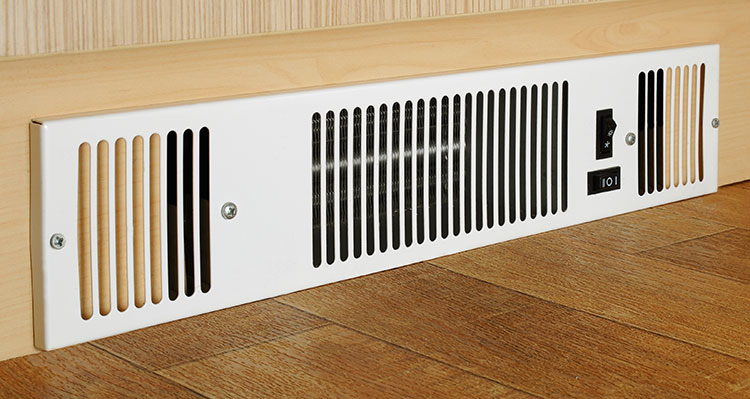
Kickspace heaters are great for under cabinets.
Supplemental home heating
If your home is older, chances are your central heating systems hasn't been upgraded recently. Depending on the age or type of system you have, it may not be up to the task of keeping your whole house warm when the temperatures are below freezing outside. Older heating systems can be inefficient at providing enough heat to keep you comfortable.
Rather than putting on extra layers of clothing when winter comes, you can use a baseboard heater to supplement your heating system to supply the added warmth your furnace is unable to provide. No more shivering while you go about your day. The average baseboard heater can easily and quickly warm up a drafty room and cover an area up to 150 feet away from the unit.
Portable and easy to use
If you need to heat only specific locations, a portable plug-in model could be the perfect solution. These type of heaters easily plug into any nearby electrical outlet to supply extra heat where you need it most. Need to move the location? No problem, a portable model can be moved from room to room. They are great for providing an alternative heating source in dormitories, apartments, RVs, cabins, and other smaller living spaces when they become drafty and chilly.
Portable units work as well as units that require installation. Many also feature an automatic shut-off with a built-in sensor, so the unit turns off when the room reaches the desired temperature, thus saving energy when it's not needed.
If a baseboard heater might be the answer to staying warm this winter while saving you money, you'll find a selection of models in a variety of sizes, types including electronic baseboard heaters, hydronic, recessed wall, and kickspace heaters, and brands such as Runtal and Quiet-One at Riverbend Home.

